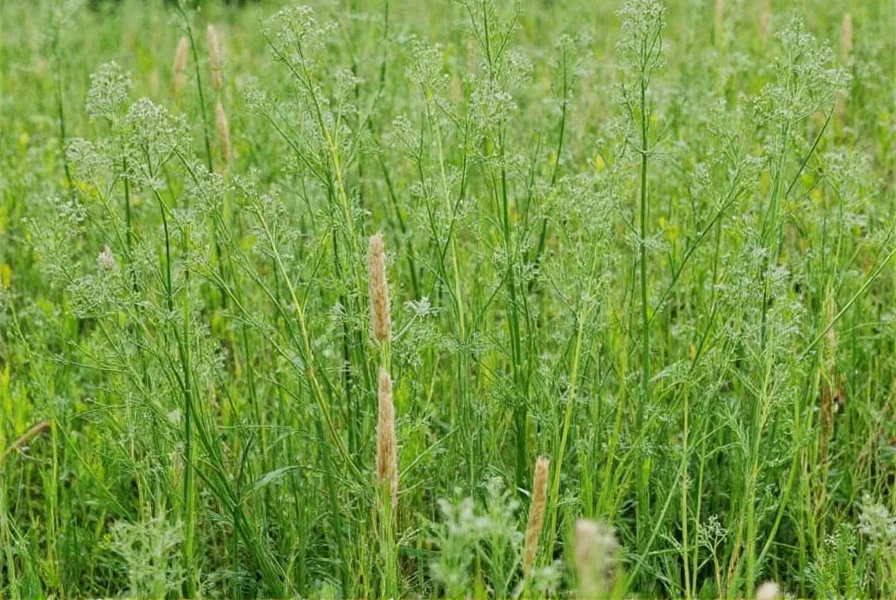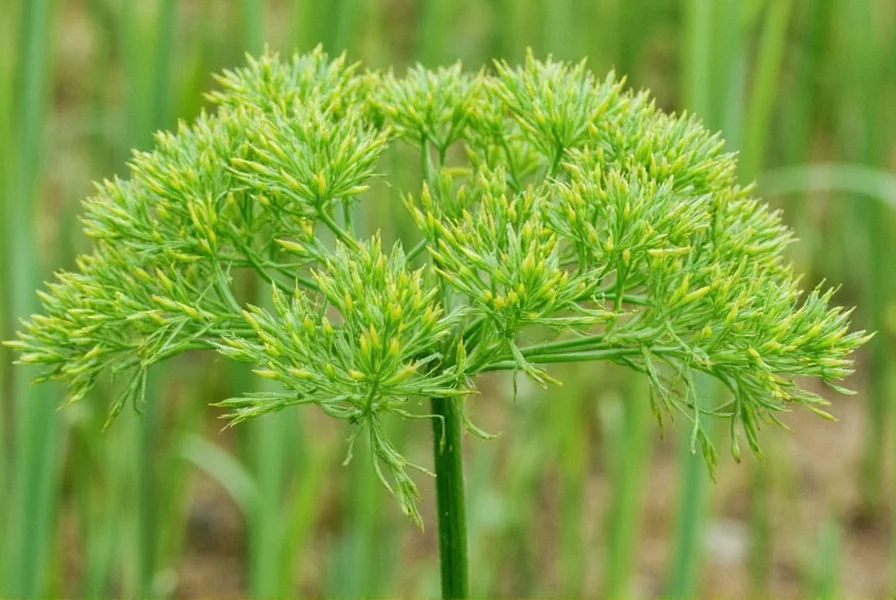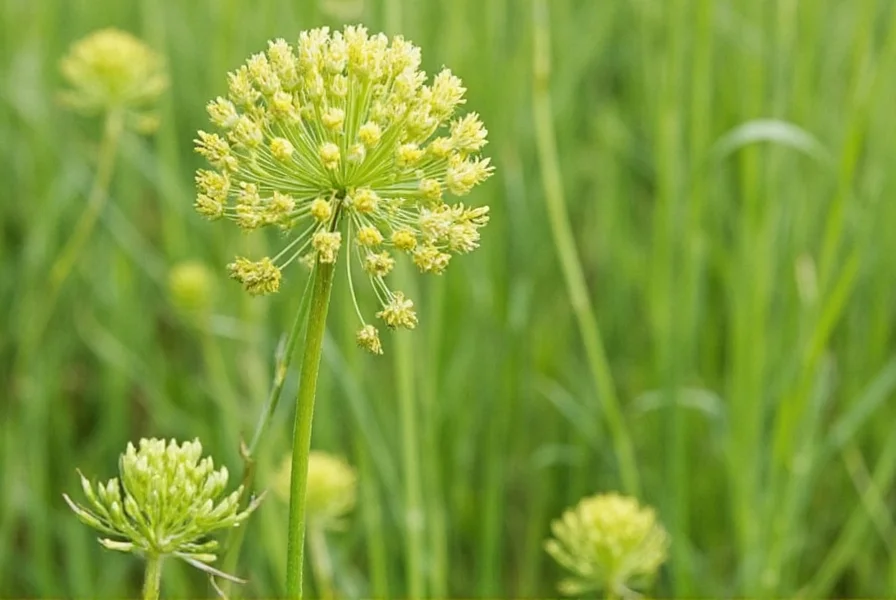Foeniculum vulgare, commonly known as fennel, is a perennial herb belonging to the Apiaceae family with distinctive yellow flowers and feathery leaves. This aromatic plant has been used for culinary, medicinal, and ornamental purposes for over 2,000 years across Mediterranean, Indian, and Chinese cultures. Both its bulb, seeds, and leaves offer unique flavor profiles and potential health benefits supported by modern scientific research.
Understanding foeniculum vulgare botanical characteristics begins with recognizing its distinctive features. This hardy perennial typically grows 2-5 feet tall with hollow stems, delicate feathery leaves, and clusters of small yellow flowers arranged in umbrella-like structures called umbels. The plant produces aromatic oval seeds containing essential oils that give fennel its characteristic licorice-like flavor. Fennel's bulbous base, often mistaken as a root vegetable, actually forms from the plant's leaf bases swelling together near the soil surface.
Historically, foeniculum vulgare historical significance spans multiple ancient civilizations. The ancient Greeks considered fennel sacred, naming it "marathon" after the famous battle site where legend claims fennel grew abundantly. Roman soldiers consumed fennel seeds to sustain their strength during long marches. In traditional Ayurvedic medicine, fennel has been used for digestive support for centuries, while Chinese herbalists incorporated it into remedies for respiratory conditions. Medieval Europeans planted fennel above doorways to ward off evil spirits, demonstrating its cultural importance beyond practical applications.
| Part of Foeniculum vulgare | Primary Uses | Key Compounds |
|---|---|---|
| Bulb | Culinary (roasted, grilled, raw) | Anethole, estragole |
| Seeds | Spice, tea, essential oil | Fenchone, limonene |
| Fronds | Herb garnish, flavoring | Apiol, myristicin |
| Pollen | Gourmet seasoning | High-concentration essential oils |
When exploring foeniculum vulgare culinary applications, chefs worldwide utilize different plant parts in diverse preparations. The crisp bulb works beautifully roasted with olive oil and lemon, grilled as a side dish, or thinly sliced raw in salads. Fennel seeds serve as a key component in Indian spice blends like panch phoron and Chinese five-spice powder. In Italian cuisine, fennel pollen—often called "the truffle of the plant kingdom"—commands premium prices for its intense flavor. The feathery fronds function as a delicate herb similar to dill, perfect for garnishing fish dishes or flavoring sauces. Understanding these different uses of foeniculum vulgare in cooking helps home cooks maximize this versatile plant's potential.
Scientific research increasingly validates foeniculum vulgare medicinal properties that traditional medicine systems have recognized for centuries. Multiple studies indicate fennel's potential digestive benefits, with clinical trials showing fennel oil effectively reducing infant colic symptoms. Research published in the Journal of Ethnopharmacology demonstrates fennel's antispasmodic effects on intestinal muscles. Other studies suggest fennel may support respiratory health through its expectorant properties and potentially help regulate menstrual cycles due to phytoestrogen compounds. However, researchers caution that foeniculum vulgare clinical evidence limitations exist, with many studies having small sample sizes or methodological constraints.

For gardeners interested in how to grow foeniculum vulgare successfully, this plant prefers full sun and well-drained soil with moderate watering. Fennel grows best in USDA hardiness zones 4-9, reaching maturity in 60-90 days from seed. The plant self-seeds readily, so many gardeners designate a permanent spot to avoid unwanted spread. When cultivating fennel for its bulb, gardeners should blanch the developing base by mounding soil around it to maintain tenderness and prevent premature flowering. Those growing fennel for seed production should allow plants to flower and mature fully before harvesting the seed heads. Understanding foeniculum vulgare cultivation requirements ensures optimal growth and yield.
Nutritionally, fennel offers impressive value with minimal calories. A 100g serving of raw fennel bulb contains just 31 calories while providing 14% of the daily recommended fiber, 12% of vitamin C, and significant amounts of potassium and manganese. Fennel seeds pack even more concentrated nutrition—a single tablespoon delivers 2 grams of fiber, 10% of daily calcium needs, and notable iron content. The plant's distinctive flavor comes primarily from anethole, a compound with demonstrated antioxidant properties in laboratory studies. When considering foeniculum vulgare nutritional benefits, it's important to distinguish between the bulb's hydrating properties and the seeds' more concentrated nutrient profile.
Safety considerations for foeniculum vulgare consumption precautions include several important points. While generally recognized as safe by the FDA, fennel contains compounds that may interact with certain medications, particularly blood thinners and hormone-sensitive conditions. Pregnant women should avoid medicinal quantities of fennel due to potential uterine stimulation effects. Individuals with known allergies to plants in the Apiaceae family (including carrots, celery, and parsley) may experience cross-reactivity with fennel. Essential oils derived from fennel require particular caution, as concentrated forms can be toxic in excessive amounts. Understanding these foeniculum vulgare safety guidelines helps users enjoy its benefits responsibly.

For those interested in foeniculum vulgare home remedies, several traditional preparations have scientific backing. A simple fennel seed tea—made by steeping one teaspoon of crushed seeds in hot water for 10 minutes—may help soothe digestive discomfort. Some lactation consultants recommend fennel tea for breastfeeding mothers, though evidence remains limited. Topical applications of diluted fennel oil may provide temporary relief for minor muscle aches, though patch testing is essential due to potential skin sensitivity. When preparing foeniculum vulgare natural remedies, always use food-grade ingredients and consult healthcare providers for persistent health concerns.
What is the difference between sweet fennel and bitter fennel?
Sweet fennel (Foeniculum vulgare var. dulce) features the bulbous base commonly used in cooking, with mild anise flavor. Bitter fennel (Foeniculum vulgare var. vulgare) grows taller with less developed bulbs and higher concentrations of essential oils, making it preferred for medicinal extracts and essential oil production.
Can you eat all parts of foeniculum vulgare?
Yes, all parts of foeniculum vulgare are edible. The bulb serves as a vegetable, the feathery fronds function as an herb, the flowers add visual appeal to dishes, and the seeds provide intense flavor. Even the pollen offers a gourmet seasoning option, though it requires careful collection.
How does foeniculum vulgare affect digestion?
Foeniculum vulgare contains compounds like anethole that demonstrate antispasmodic effects on intestinal muscles. Clinical studies show fennel oil can reduce symptoms of infant colic and improve digestive comfort in adults. The fiber content in fennel bulb also supports healthy digestion and regularity.
Is foeniculum vulgare safe for pregnant women?
While culinary amounts of foeniculum vulgare in food are generally considered safe during pregnancy, medicinal quantities (such as concentrated teas or supplements) should be avoided. Fennel contains compounds that may stimulate uterine contractions, so pregnant women should consult their healthcare provider before using fennel therapeutically.
How do you store fresh foeniculum vulgare?
Store fresh fennel bulb in the refrigerator's crisper drawer, wrapped in a slightly damp paper towel inside a perforated plastic bag. Properly stored, it remains fresh for 7-10 days. Fennel fronds can be stored similarly but last 3-5 days. For longer storage, freeze chopped fennel in airtight containers for up to 6 months.











 浙公网安备
33010002000092号
浙公网安备
33010002000092号 浙B2-20120091-4
浙B2-20120091-4